There's more to Sonoma County's Bodega Head than the stunning views, crashing waves, nesting seabirds, and bursts of flora and fauna.
The sand cliffs are also the home of a digger bee, a bumble bee mimic known as Anthophora bomboides stanfordiana.
"The species name indicates that it is a bumble bee mimic," the late Robbin Thorp, a global authority on bumble bees and a UC Davis distinguished emeritus professor of entomology, told us several years ago. "These bees need a source of fresh water nearby. Females suck up water, regurgitate it on the sandstone bank surface, then dig away at the soft mud. They use some of the mud to build entrance turrets, presumably to help them locate their nests within the aggregation of nests."
"The female," Thorp said, "sucks up fresh water from nearby, stores it in her crop (like honey bees store nectar) for transport to the nest. She regurgitates it on the sandstone, and excavates the moistened soil. She carries out the mud and makes the entrance turret with it."
On multiple trips to Bodega Bay over the years, we watch in fascination as the bees excavate their homes, zip in and out of their turrets, and nectar on nearby flowers.
This time (June 24) we photographed an ant and bee encounter on a turret. The ant? Formica transmontanis, according to ant specialists Phil Ward, professor of entomology at UC Davis, and UC Davis alumnus Brendon Boudinot, who recently received his doctorate from UC Davis, studying with Ward.
"The species nests on the bluffs," Ward told us.
And about that bee-ant encounter? Commented Boudinot: "I suspect the little lady was alarmed by the big bee. These ants and their relatives are rather passive scavengers except during the brooding season, when fresh meat is an order. Most entomeat for Formica tend to be free-walking insects than barricaded larvae, as probably for the bee. For these reasons I think that the encounter may be coincidental!"
Scores of UC Davis entomologists have engaged in research at Bodega Bay. Rachel Vannette, assistant professor, UC Davis Department of Entomology and Nematology, is currently researching Anthophora bomboides stanfordiana and its nests as part of a National Science Foundation grant. Her project on solitary bee provision microbiome includes investigating the diverse community of bacteria and fungi in the provisions and brood cells.
While COVID-19 mandates and precautions hamper her research team's efforts (she's done some preliminary sampling this year and the entire team is planning to do research next year), the digger bees of Bodega Head keep digging, crafting turrets, nectaring on the nearby flora--and encountering ants.
They're all in this together.
Attached Images:
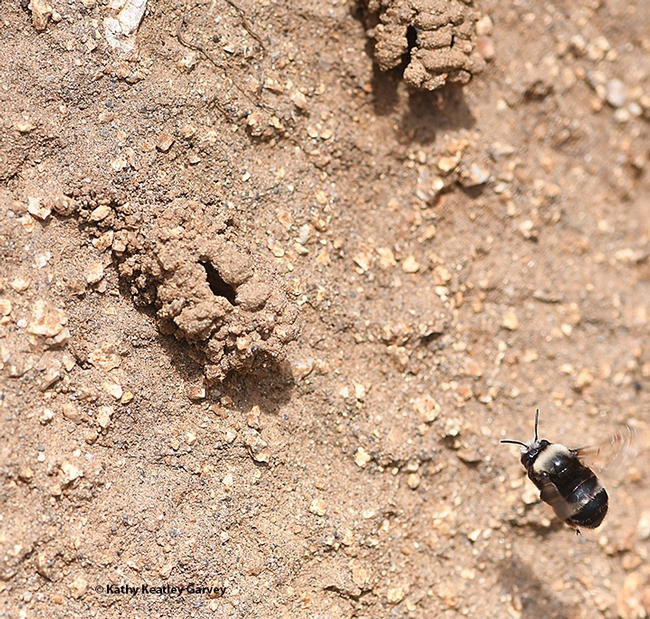
A digger bee, Anthophora bomboides stanfordiana, returning to her nest on the sand cliffs of Bodega Bay. (Photo by Kathy Keatley Garvey)
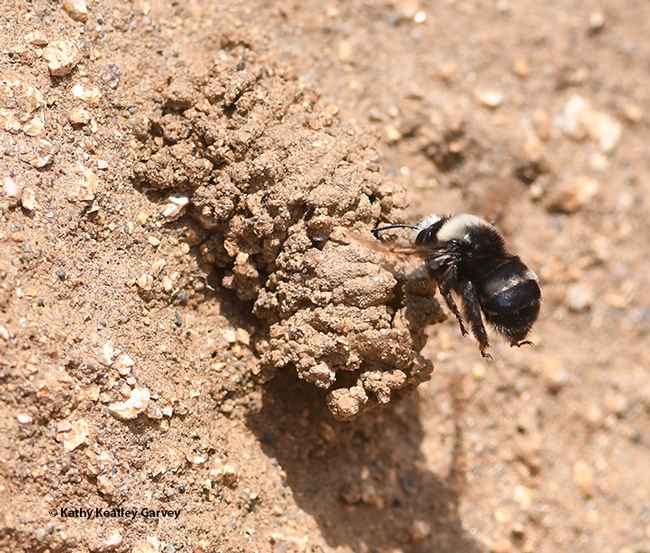
A digger bee, Anthophora bomboides stanfordiana, edges closer to her nest on the sand cliffs of Bodega Bay. (Photo by Kathy Keatley Garvey)
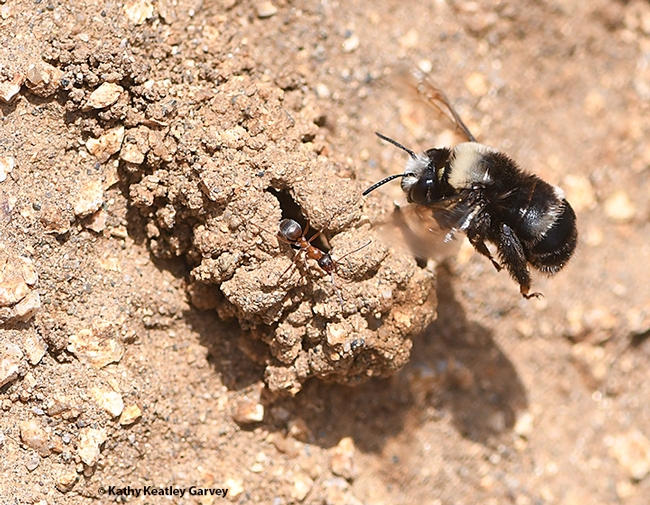
A bee-ant encounter: The digger bee, Anthophora bomboides stanfordiana, encounters an ant, Formica transmontanis, as identified by ant specialists Phil Ward and Brendon Boudinot of UC Davis. Both species nest on the sand cliffs. (Photo by Kathy Keatley Garvey)
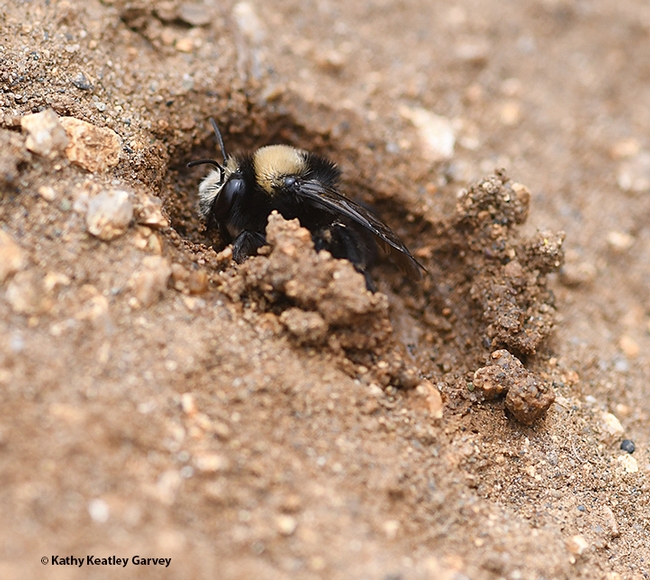
A digger bee, Anthophora bomboides stanfordiana, excavating a nest on the sand cliffs of Bodega Head. (Photo by Kathy Keatley Garvey)
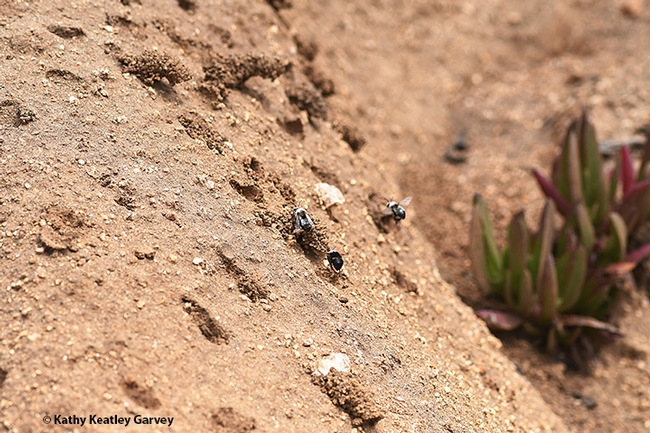
Four digger bees, Anthophora bomboides stanfordiana, appear in this image at Bodega Head. (Photo by Kathy Keatley Garvey)
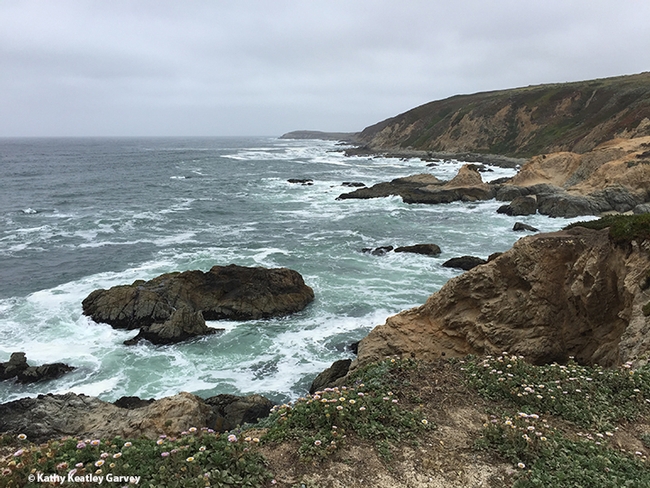
A view from Bodega Head. Most tourists are unaware of the digger bees that inhabit the sand cliffs. (Photo by Kathy Keatley Garvey)